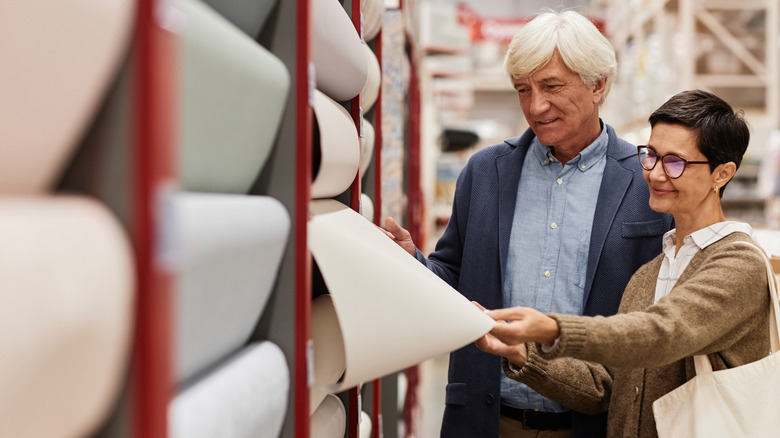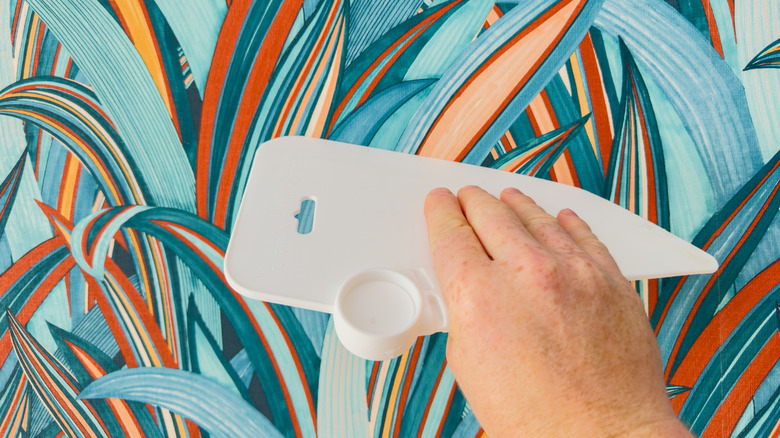Think Twice Before You Wallpaper Over Paper That's Already Hung (You Will Not Like The Result)
We may receive a commission on purchases made from links.
Wallpaper is one of the vintage home design trends that made a huge comeback in recent years. This is welcome news for homeowners who appreciate the artistic quality of this decorative interior design element. Some of the biggest trends include hand-painted designs, murals, and bold trims. Still, choosing the right design is just one part of a new wallpaper project, especially if you're wanting to replace existing paper. In such cases, you should think twice before you wallpaper over paper that's already hung: the result is an unappealing bubbling effect.
There are several possible causes of wallpaper bubbles (also called blisters), which are among some of the biggest wallpaper mistakes homeowners make. First, trapped air can create a large bubbling effect if the paper is not placed tightly against a wall. Failing to use enough paste, an uneven paste application, and not allowing the paper to soak (book) before adhering it to the wall can all lead to blistering, too. Bubbles can also arise if you place new wallpaper over existing paper because it may not adhere as well. The risk is especially greater if the old wallpaper is textured or uneven. It may be tempting to wallpaper over old paper to save a bit of work and time, particularly if this task is just one part of a major renovation. However, unless the existing wallpaper is relatively new, untextured, and perfectly even, you might end up creating more work for yourself in the long-run.
How to remove wallpaper and prevent bubbles in new paper installation
Instead of placing new wallpaper over existing paper, your best bet is to take down the old wallpaper and start from scratch. If the current wallpaper is a newer design, it may be strippable. Remove it by starting from one edge and gently pulling away from the wall, all without the need for chemicals. However, older designs might require the help of a commercial product, such as WP Chomp! World's Best Wallpaper Stripper spray. Once you have removed the existing wallpaper, you will need to ensure the wall is perfectly clean and smooth. Also, check for any uneven plaster or holes at this time; fixing these now can decrease the risk of tears and bubbles in your new wallpaper application.
Once you've prepared the wall, you will need to take steps to ensure your new wallpaper does not bubble. Priming the wall and applying an even amount of paste along every part of the surface can help ensure the paper sticks evenly throughout the installation process. If the paper does start to bubble, you can take care of these by gently brushing them with a cloth or brush from the center to the edges of the wall. A squeegee is another cleaning tool that can help install wallpaper at this stage. If you find small bubbles once the new wallpaper dries, all is not necessarily lost. You can use either a fine needle to inject paste into a small bubble, or cut open a larger bubble with a small crafting knife and apply paste to the back of the paper before smoothing it back into place.

